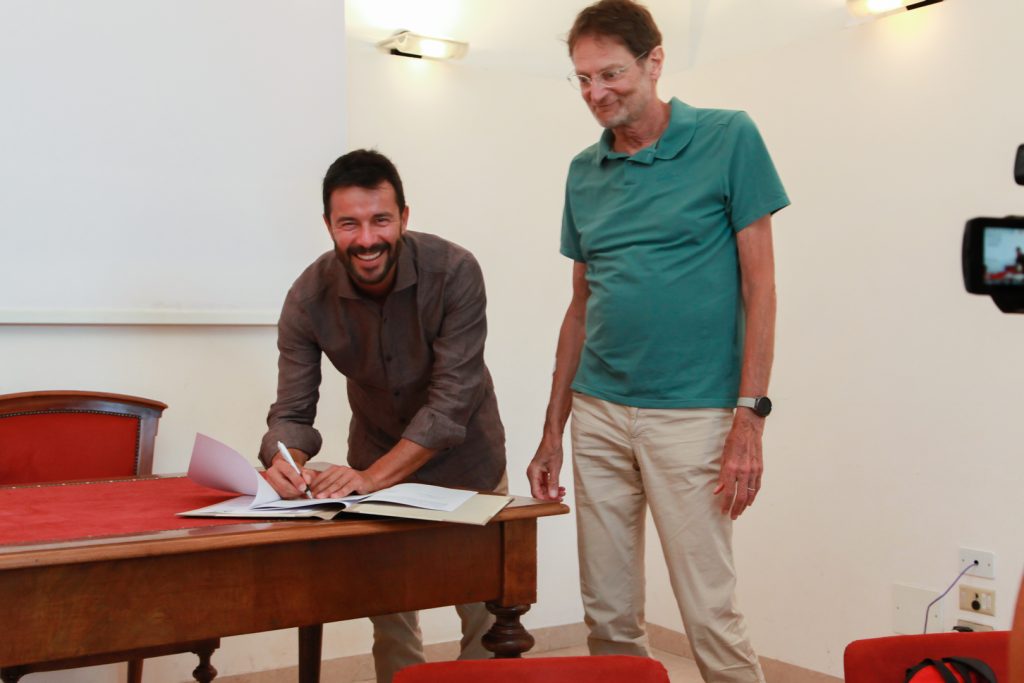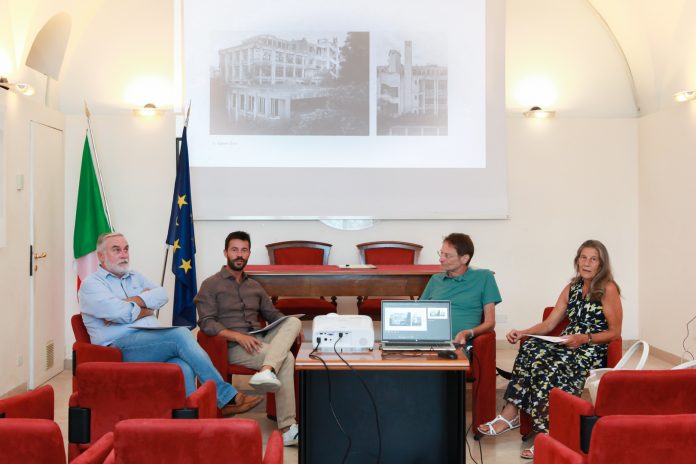by InTrieste
Wednesday morning, in a ceremonial signing at the Tergeste Hall of the Trieste Municipality, city officials and the association ArTE (Architecture for Ecosustainable Transformation) formalized a significant collaboration aimed at showcasing and preserving the city’s architectural heritage.
The agreement, signed by Michele Babuder, the City Councilor for Territorial Policies, and Francesco Pavanello, the President of ArTE, marks a pivotal moment in Trieste’s ongoing efforts to promote and protect its rich architectural legacy. Eddi Dalla Betta, Director of the City’s Territorial Planning Service, and Graziella Bloccari, President of the Order of Architects, also participated in the signing.

A Historic and Contemporary Focus
This collaboration represents a dual-pronged approach to architectural preservation. On one hand, it aims to continue the work already underway to restore and conserve Trieste’s historic center—a project that began in 2021 with a dedicated recovery and conservation plan. On the other, it seeks to spotlight the city’s contemporary architectural treasures, which have long remained underappreciated. Trieste’s modern architecture, featuring the works of renowned architects such as Umberto Nordio and Marcello D’Olivo, will be featured in a series of cultural initiatives.
“The agreement symbolizes the beginning of a meaningful partnership between the City of Trieste and ArTE,” said Babuder. “Our goal is to enhance the city’s architectural heritage, not only from a historical perspective but also by bringing contemporary architecture into the spotlight.”
The Secret Treasure of Contemporary Architecture
The partnership will emphasize the importance of Trieste’s more recent architectural achievements, which have often been overshadowed by the city’s storied past. Babuder noted that while Trieste’s mid-20th-century architecture has been somewhat neglected, it is a vital part of the city’s evolving landscape. ArTE’s initiative aims to bridge this gap by promoting a broader appreciation for these structures through various cultural and educational activities.
“The architecture of the past seventy years remains largely unrecognized,” Dalla Betta remarked. “Our contemporary buildings could become key elements of Trieste’s cultural tourism, enriching the city’s already vibrant historical narrative.”
Preserving the City’s Technical Legacy
The Technical Drawing Archive of the City of Trieste will play a crucial role in this initiative. This archive, managed by a team including surveyor Adelio Paladini and cultural heritage scholar Gianfranco Paliaga, holds invaluable records of the city’s architectural development. It will provide essential documentation and insights into the contemporary buildings that will be featured under the new collaboration.
“These archives contain a rich historical and cultural asset,” Paliaga explained. “By making this information accessible, we aim to shed light on the often-overlooked architectural contributions from the post-war period to the early 2000s.”
A Vision for the Future
As part of this initiative, ArTE will work on creating a comprehensive Atlas of Contemporary Architecture, which will include guided architectural tours. These tours are designed to uncover buildings that have yet to be featured in architectural histories, aiming to foster a greater appreciation of the city’s modern architectural landscape.
The collaboration will also include public events, seminars, and conferences to further highlight the significance of architecture in the development of the city and its surroundings. “We are excited about the possibilities this partnership brings,” Babuder concluded. “It is not just about preserving the past but also about celebrating and promoting Trieste’s ongoing architectural story.”
The ArTE Association
Founded at the end of 2022, ArTE is dedicated to promoting and spreading architectural culture. The association, a registered social promotion entity, aims to enhance public understanding of both historical and contemporary architecture. “Our focus is on the built environment from the post-war period to the early 2000s,” said Pavanello. “We are delving into a largely unexplored area, aiming to highlight the architectural quality and cultural significance of this era.”
Looking Ahead
Graziella Bloccari, President of the Order of Architects, expressed a hopeful vision for the future: “One day, I dream of seeing a House of Architecture established in one of the city’s currently forgotten buildings, serving as a cultural and professional hub.”





























